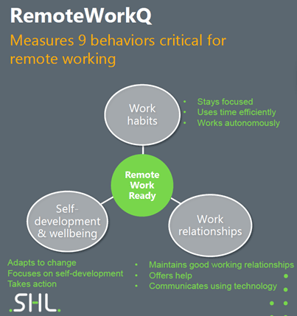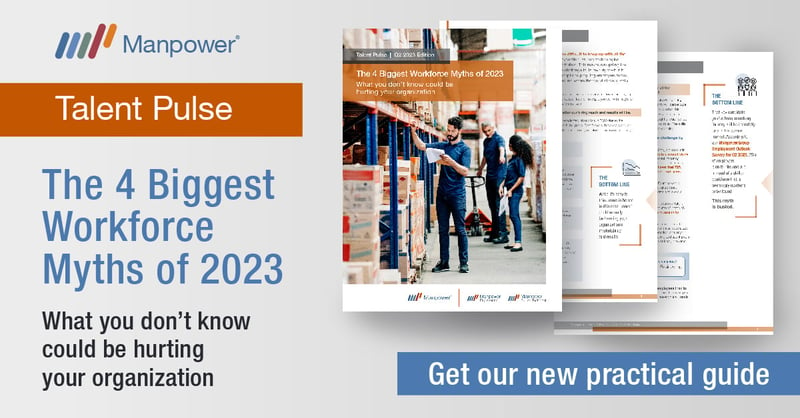Worker shortages continue to be pervasive across many industries. According to our 2021 Talent Shortage Survey, global talent shortages are at a 15-year high and more than 1 in 3 of U.S. employers report difficulty filling jobs. The call center industry already grapples with high turnover rates — with a national average hovering between 30 and 45% — and now talent shortages are making the situation even worse.
What does that mean for call center and customer experience leaders who are working to fill open positions—from on-site and remote agents to customer service representatives, sales, and collection reps—while optimizing costs and maintaining a high-quality experience for customers?
With fewer candidates and high turnover, call center leaders are rethinking their hiring strategy. After all, call center agents are the voice of your company, so lowering your hiring standards isn’t an option.
Attracting Workers
In a talent shortage, workers are calling the shots. And one of their strongest desires coming out of the last 18+ months is a desire for more flexibility. According to our Future for Workers By Workers survey, 80% of U.S. workers want options to work outside the office, while another 63% want flexible hours. The report also found that after health concerns, the top worry for workers is going back to the way things were – losing their newfound flexibility and being required to be back in the workplace daily.
In this climate, remote work is a powerful incentive.
Virtual call centers a win-win
We saw during Covid that many call centers, like other organizations, were restructuring to allow remote work. This required a massive amount of agility and tech savvy. You may have already discovered the advantages of the remote call center:
- Cost savings. If your office is fully or partially closed, you’ll save on utilities, cleaning costs, etc.
- Reduced exposure to health risks due to Covid and continuing surges
- Less impact from Covid-related workplace policies regarding masks, vaccinations and sanitation procedures (cost savings will be realized here as well)
- An expanded talent pool. You’re not restricted to a certain geographic location.
- Attractive to talent: The flexibility of remote work could offer better work-life balance, piquing the interest of more job candidates while reducing turnover in current staff
How to make the best hiring decisions
Whether your model is remote, onsite or hybrid, it's important to make the best hires possible to enable high performance and retention. For remote work, ensuring that a worker has the foundational behaviors to successfully work at home is critical not just for the success of a company but for the well-being of the worker. While the work-from-home model may be appealing on its surface, it requires certain competencies that differ from those where peers and supervisors are available, and face-to-face interaction creates a certain stability.
We’ve worked with SHL, a world leader in data-driven people insights, to develop an assessment specifically designed to measure behaviors indicative of successful remote workers. This behavioral assessment has also been combined with a realistic job preview simulation designed specifically for call center roles.
We make better talent matches with RemoteWorkQ
RemoteWorkQ is a proven assessment that measures 9 behaviors indicative of remote work success. We use this assessment not to rule out candidates but to broaden the candidate pool. For example, we’ve found that workers from other industries excel in the behavioral competencies critical to remote work. Historically, these workers may have been passed over because their experience was not in line with the typical call center candidate, but they may end up being more suitable in the long run. RemoteWorkQ has been validated in the U.S. and was determined to be highly predictive of actual behavior.*

Questions are centered on Work Habits, Self-development and Well-being, and Work Relationships.
RemoteWorkQ may be used as part of the hiring process, or to determine remote suitability for current onsite employees.
With Remote Work Q, you’re prepared
Even if you plan to continue onsite operations at your call center, I see value in evaluating the workforce with the understanding that the situation may require a return to virtual or hybrid work with little notice. RemoteWorkQ will cue you in on which workers are remote-ready and which may need more coaching or supervision.
Manpower’s holistic assessment strategy
Manpower has commissioned the validation of the RemoteWorkQ assessment (RWQ) to be incorporated into our Virtual Contact Center Solution – combining this predictive behavioral assessment with simulations to measure day-to-day competencies such as typing, phone etiquette, issue resolution and service orientation. The RWQ is also available as a stand-alone option.
But formal assessments are just one part of the process when it comes to evaluating candidates.
An effective assessment strategy:
- Combines multiple data points in order to paint a clearer picture of a candidate’s eligibility and suitability for the job
- Helps determine a candidate’s fit for the job and the organization
- Streamlines the recruitment process and produces qualified candidates
- Understands, guides and supports associates in their career journeys
There are 200+ assessments in Manpower’s SHL test portfolio, measuring soft skills such as motivational fit, situational judgment and cognitive ability.
The importance of upskilling and education
Another way to reduce turnover and make employees feel valued is through upskilling opportunities. We make employees feel connected through our Manpower MyPath program. MyPath enables our talent to access jobs and grow in in-demand careers by providing personalized guidance, learning programs, upskilling opportunities and practical on-the-job training so that they can achieve more.
Providing upskilling opportunities equips employers to better prepare for the future as well. In this time of talent shortages and increased turnover, increasing the skills of proven workers grows talent from within, increasing bench strength and worker loyalty.
*Our validation study included measurement of first-time virtual worker success, performance during the transition period to virtual, and continued performance success over time.)





Comments